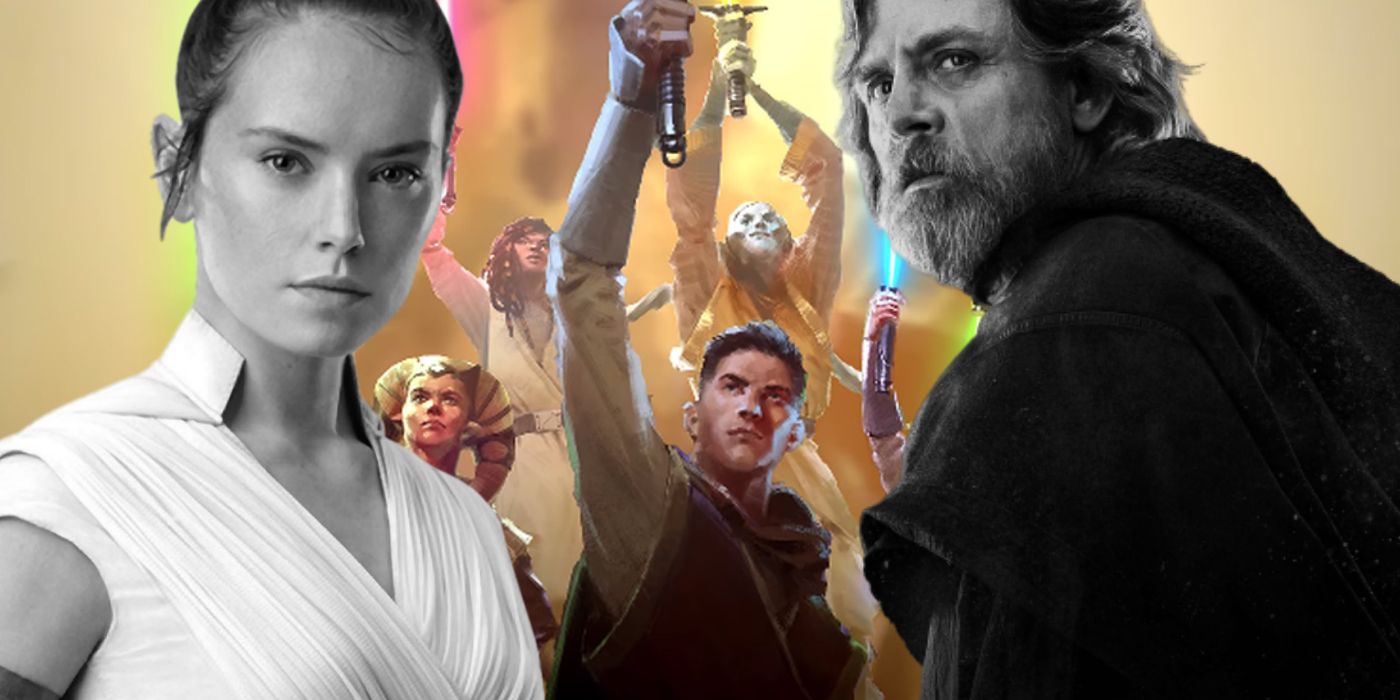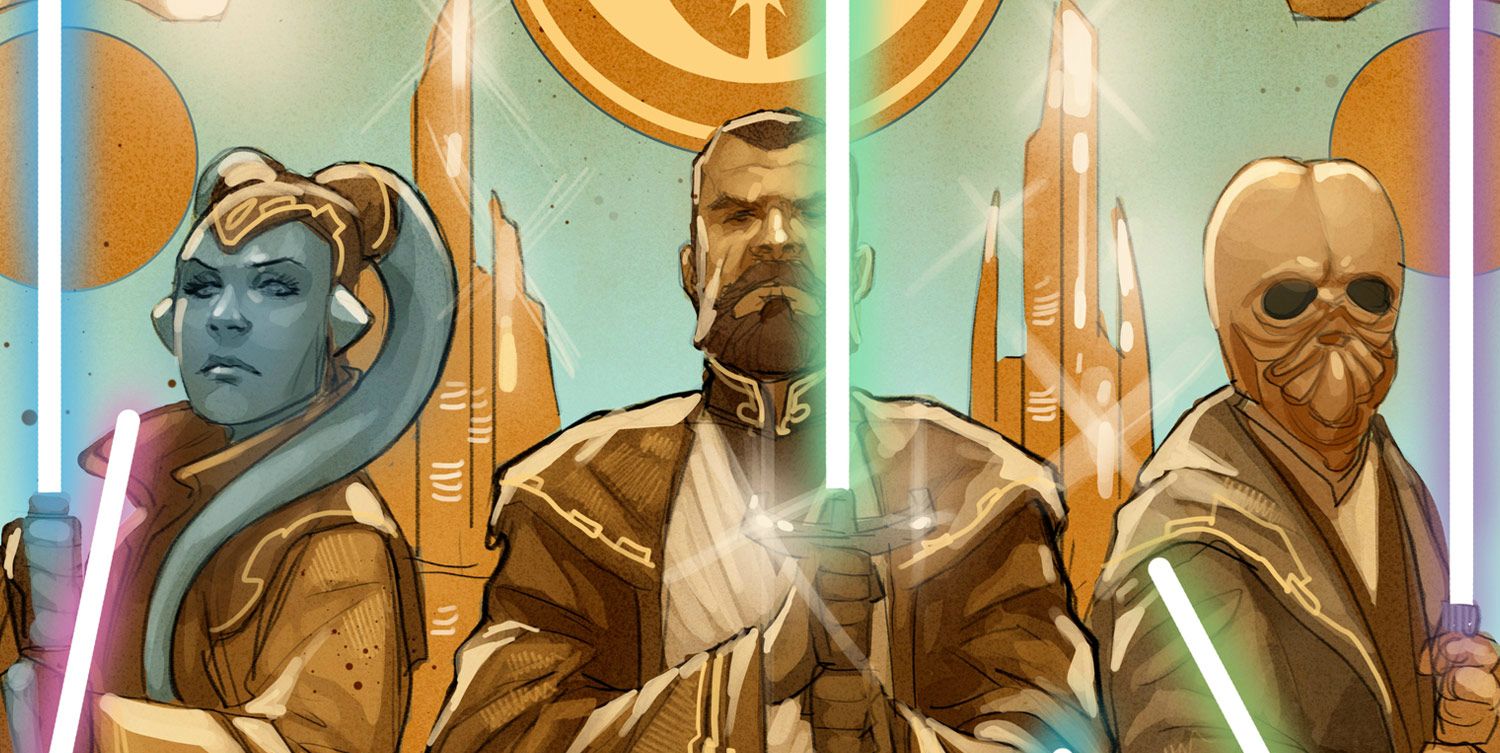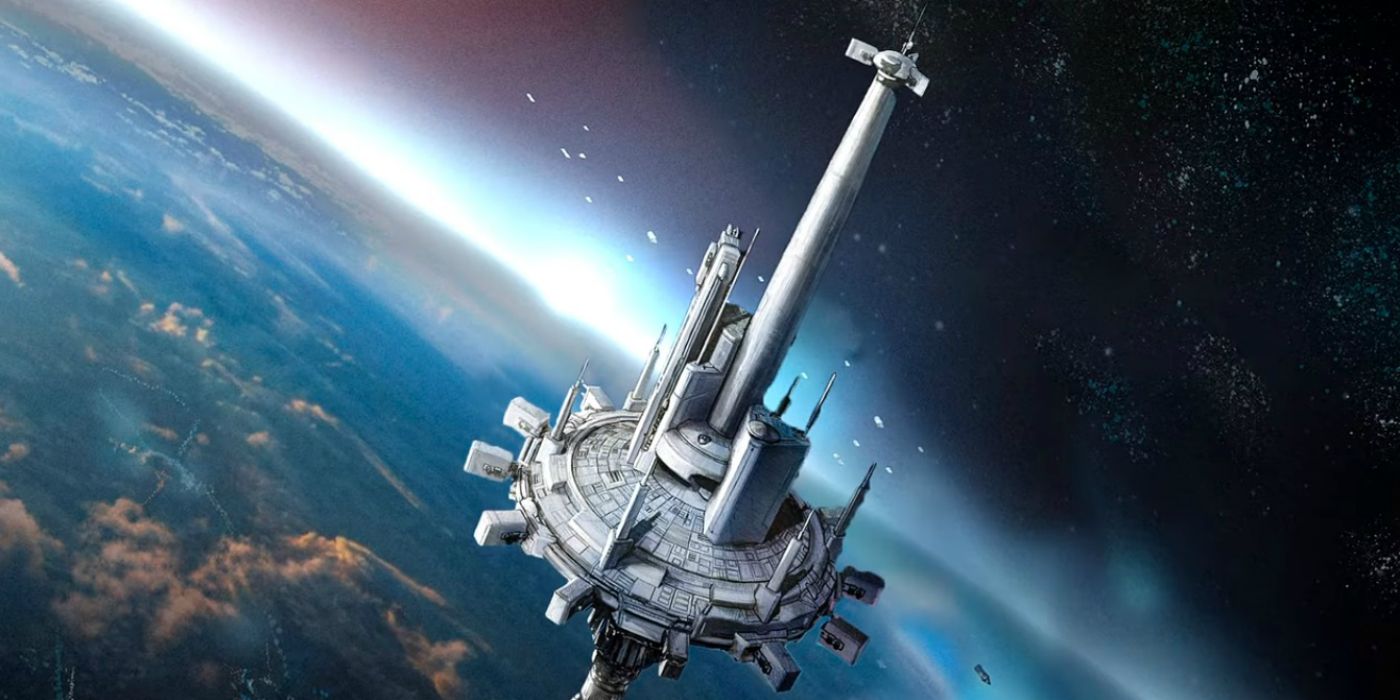Lucasfilm Publishing has announced their new Star Wars initiative, Project Luminous, centered on the High Republic Era - and it can correct the mistakes of the sequel trilogy. When Disney purchased Lucasfilm back in 2012, they wasted little time in announcing both a new sequel trilogy and an anthology series of films. Eight years later, that strategy seems to have largely failed. The sequels have turned out to be a disappointment, ending not with a bang but a whimper in J.J. Abrams' Star Wars: The Rise of Skywalker, and the anthologies are on hold after the box office failure of Solo: A Star Wars Story.
As has often been the case through the history of Star Wars, the solution appears to lie with publishing. Lucasfilm assembled a group of the most well-respected contemporary Star Wars writers - Claudia Gray: Cavan Scott, Daniel Jose Older, Justina Ireland, and Charles Soule - and allowed them the space to craft their own story. This talented team has come up with the idea for the High Republic Era, adventures set 200 years before the events of Star Wars: Episode I - The Phantom Menace, centered upon a space station called Starlight Beacon and bringing the Old Jedi Order into conflict with a new group of enemies called the Nihil.
Lucasfilm Publishing has long been critical to the success of Star Wars. The old Expanded Universe really kicked off in 1991, when writer Timothy Zahn released the first book of The Thrawn Trilogy, and the boom in Star Wars literature ultimately led George Lucas to return to make the prequel trilogy. No doubt Lucasfilm hope this latest publishing initiative can breathe new life into a top-tier, but oddly struggling, franchise. Fortunately, the odds look good, because this shows every sign of having learned critical lessons from the weaknesses of the sequel trilogy.
Star Wars: The High Republic Escapes The Shadow Of The Original Trilogy
The Star Wars equels never really stepped out of the shadow of the original trilogy. Even George Lucas was disappointed when he saw how Star Wars: The Force Awakens copied the first Star Wars film. "There's nothing new," he said openly. "There weren't enough visual or technical leaps forward." Former Disney CEO Bob Iger defended this approach in his biography The Ride of a Lifetime, insisting Lucas could not understand the pressure Lucasfilm president Kathleen Kennedy and director J.J. Abrams were under; Iger argued the first of the sequels had to be a spiritual successor to the original trilogy, simply in order to prove Star Wars was safe with Disney. It's a matter of record that this strategy hardly seems to have paid off.
But the High Republic Era presents Star Wars with an opportunity to step away from the original trilogy. As noted, it's set 200 years before the prequels; while the Sith are active in the shadows, their continued existence is a secret, one that won't be discovered for centuries. That means readers may well be able to get a sense of the Sith's Machiavellian manipulations, but they should be no more than puppet-masters, not the main villains. This is apparently the Jedi Order at its height, before they became embroiled in galactic politics and lost their way, and the Old Republic doesn't even have a military of its own; thus there should be foreshadowing of the Clone Wars or the Empire.
Of course, there is one obvious link between the High Republic and the Skywalker Saga; Yoda. Yoda was 900 years old by the time of his death in Return of the Jedi, meaning the High Republic Era was within his lifetime. Pleasingly, though, Lucasfilm Publishing has entirely avoiding hooking their story on the past adventures of Master Yoda. Although sketches seen in the launch video appear to show a younger Master Yoda, he clearly isn't the focus, and hopefully will be reserved to a background presence.
Star Wars: The High Republic Is An Entirely New Concept
Until now, Disney's Star Wars has been surprisingly dependent on the old Expanded Universe. When Disney purchased Lucasfilm, they made the painful decision to erase all previous tie-ins - the comics, novels, and games - from the canon. Since then, they've essentially picked the Expanded Universe clean, absorbing any interesting characters, concepts, and plot twists into their own stories. Kylo Ren is strikingly similar to Han and Leia's son in the Expanded Universe, Jason, who fell to the dark side and became a Sith. Anthologies have explored stories originally told in the EU, such as the theft of the Death Star plans in Rogue One: A Star Wars Story, or Han Solo's life story. Grand Admiral Thrawn, a classic figure from Legends, has become a central figure in Lucasfilm Publishing's plans, and played a major role in Star Wars Rebels. Given this context, most fans had assumed Lucasfilm was about to redo the beloved Knights of the Old Republic era.
Instead, they're doing something entirely new, taking inspiration from an Obi-Wan line: "For over a thousand generations," he declared, "the Jedi Knights were the guardians of peace and justice in the Old Republic." Curiously enough, Star Wars has never cast an eye to that time period before, instead focusing either upon the dawn of the Jedi Order and the Old Republic, or its twilight. Furthermore, conceptually Project Luminous appears more inspired by Star Trek: Deep Space Nine than anything that's been done before in the EU. It's centered around Starlight Beacon, a space station on the Outer Rim that serves as a lighthouse, helping travelers find their way through the unstable maelstrom of the Unknown Regions.
It's true this will require careful handling. The sequel trilogy misunderstood George Lucas' idea of the Jedi; it presented them as heroes and legends, failing to understand they were supposed to be painfully flawed. The writers of Project Luminous will need to take great care not to fall into the same trap, especially given they've been openly discussing this as the story of the Jedi Order at its height. For all that's the case, though, the signs are good; Lucasfilm Publishing has tended to understand that theme a bit better than the film division, to the extent they've implied the Chosen One should never have been a Jedi at all. While the flaws of the Jedi Order will no doubt be a lot more subtle and less developed than in Lucas' films, it's safe to assume they'll still be there.
-
Lucasfilm has officially called publishing an "incubator," implicitly acknowledging any success stories may well jump from the comics and novels to the big screen. For now, though, that isn't the goal; and it really isn't the reason Star Wars lovers should be excited about Project Luminous and the High Republic Era. The simple fact is that this is the first entirely original idea in Star Wars since the Disney acquisition in 2012. And it's certainly the first hint Lucasfilm has learned lessons from their sequel trilogy mistakes.



